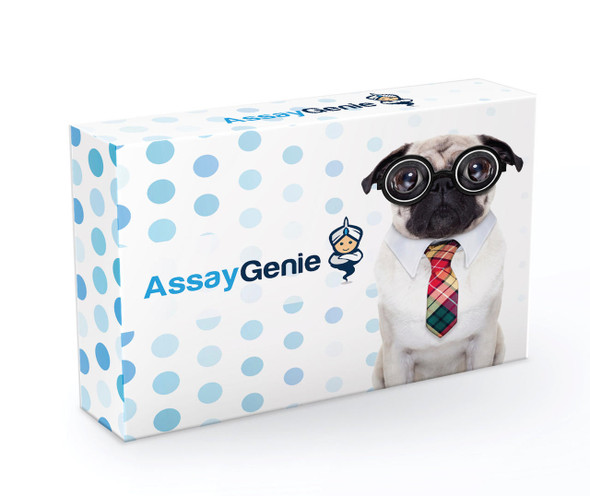Description
| Product Name: | CD127 monoclonal antibody (FITC) |
| Product Code: | AGIM0208 |
| Size: | 500 µL |
| Reactivity: | Human |
| Clone: | A019D5 |
| Applications: | Flow Cytometry |
| Conjugate: | FITC |
| Isotype: | IgG1 kappa |
| Host Species: | Mouse |
| Storage: | Store undiluted at 2-8°C. |
| Uniprot: | P16871 |
| Background: | CD127 is a 60-90 kD type I transmembrane glycoprotein also known as IL-7 receptor ?± chain or IL-7R?±. It forms a heterodimer with the common ?? chain (??c or CD132) which is shared with the receptors for IL2, IL-4, IL-9, IL-13, IL-15, and IL-21. CD127 is expressed on immature B cells through early pre-B stage cells, thymocytes (except CD4/CD8 double positive thymocytes), peripheral T cells, and bone marrow stromal cells. CD127 has been reported to be a useful marker for identifying memory and effector T cells. Studies have shown that CD127 expression is down-modulated on Treg cells. It can be used as a marker for differentiation of Treg and conventional T cells. The ligation of IL-7 with its receptor is important for stimulation of mature and immature T cells as well as immature B cell proliferation and development. |
| UniProt Protein Function: | IL7R: Receptor for interleukin-7. Also acts as a receptor for thymic stromal lymphopoietin (TSLP). Defects in IL7R are a cause of severe combined immunodeficiency autosomal recessive T-cell-negative/B-cell- positive/NK-cell-positive (T(-)B(+)NK(+) SCID). A form of severe combined immunodeficiency (SCID), a genetically and clinically heterogeneous group of rare congenital disorders characterized by impairment of both humoral and cell-mediated immunity, leukopenia, and low or absent antibody levels. Patients present in infancy recurrent, persistent infections by opportunistic organisms. The common characteristic of all types of SCID is absence of T-cell-mediated cellular immunity due to a defect in T-cell development. Genetic variations in IL7R are a cause of susceptibility to multiple sclerosis type 3 (MS3). A multifactorial, inflammatory, demyelinating disease of the central nervous system. Sclerotic lesions are characterized by perivascular infiltration of monocytes and lymphocytes and appear as indurated areas in pathologic specimens (sclerosis in plaques). The pathological mechanism is regarded as an autoimmune attack of the myelin sheat, mediated by both cellular and humoral immunity. Clinical manifestations include visual loss, extra-ocular movement disorders, paresthesias, loss of sensation, weakness, dysarthria, spasticity, ataxia and bladder dysfunction. Genetic and environmental factors influence susceptibility to the disease. A polymorphism at position 244 strongly influences susceptibility to multiple sclerosis. Overtransmission of the major 'C' allele coding for Thr-244 is detected in offspring affected with multiple sclerosis. In vitro analysis of transcripts from minigenes containing either 'C' allele (Thr-244) or 'T' allele (Ile-244) shows that the 'C' allele results in an approximately two-fold increase in the skipping of exon 6, leading to increased production of a soluble form of IL7R. Thus, the multiple sclerosis associated 'C' risk allele of IL7R would probably decrease membrane-bound expression of IL7R. As this risk allele is common in the general population, some additional triggers are probably required for the development and progression of MS. Belongs to the type I cytokine receptor family. Type 4 subfamily. 4 isoforms of the human protein are produced by alternative splicing. |
| UniProt Protein Details: | Protein type:Membrane protein, integral; Receptor, cytokine Chromosomal Location of Human Ortholog: 5p13 Cellular Component: external side of plasma membrane; extracellular region; integral to membrane; plasma membrane Molecular Function:antigen binding; interleukin-7 receptor activity; protein binding Biological Process: B cell proliferation; cell growth; cell morphogenesis; cell surface receptor linked signal transduction; homeostasis of number of cells; immune response; immunoglobulin production; lymph node development; negative regulation of T cell mediated cytotoxicity; positive regulation of T cell differentiation in the thymus; regulation of cell size; regulation of DNA recombination; signal transduction; T cell differentiation Disease: Severe Combined Immunodeficiency, Autosomal Recessive, T Cell-negative, B Cell-positive, Nk Cell-positive |
| NCBI Summary: | The protein encoded by this gene is a receptor for interleukin 7 (IL7). The function of this receptor requires the interleukin 2 receptor, gamma chain (IL2RG), which is a common gamma chain shared by the receptors of various cytokines, including interleukins 2, 4, 7, 9, and 15. This protein has been shown to play a critical role in V(D)J recombination during lymphocyte development. Defects in this gene may be associated with severe combined immunodeficiency (SCID). Alternatively spliced transcript variants have been found. [provided by RefSeq, Dec 2015] |
| UniProt Code: | P16871 |
| NCBI GenInfo Identifier: | 215274000 |
| NCBI Gene ID: | 3575 |
| NCBI Accession: | P16871.2 |
| UniProt Secondary Accession: | P16871,Q05CU8, Q6NSP4, Q6NWM0, Q6NWM1, Q6NWM2, Q6NWM3 Q6SV45, Q9UPC1, B2RCS6, B4DVT1, |
| UniProt Related Accession: | P16871 |
| Molecular Weight: | 28,724 Da |
| NCBI Full Name: | Interleukin-7 receptor subunit alpha |
| NCBI Synonym Full Names: | interleukin 7 receptor |
| NCBI Official Symbol: | IL7R |
| NCBI Official Synonym Symbols: | ILRA; CD127; IL7RA; CDW127; IL-7R-alpha |
| NCBI Protein Information: | interleukin-7 receptor subunit alpha |
| UniProt Protein Name: | Interleukin-7 receptor subunit alpha |
| UniProt Synonym Protein Names: | CDw127; CD_antigen: CD127 |
| Protein Family: | Interleukin-7 receptor |
| UniProt Gene Name: | IL7R |
| UniProt Entry Name: | IL7RA_HUMAN |


 Mouse CD127 Monoclonal Antibody (FITC Conjugated) [A7R34](AGEL0129)](https://cdn11.bigcommerce.com/s-rd6ounxcu2/images/stencil/590x590/products/11041/15095/mouse-cd127-monoclonal-antibody-fitc-conjugated-a7r34agel0129__66182__52186.1706269327.jpg?c=1)
 Human CD127/IL-7RA Monoclonal Antibody (FITC Conjugated) [A019D5](AGEL1782)](https://cdn11.bigcommerce.com/s-rd6ounxcu2/images/stencil/590x590/products/12722/16774/human-cd127il-7ra-monoclonal-antibody-fitc-conjugated-a019d5agel1782__13034__96138.1706270122.jpg?c=1)
 Mouse CD127/IL-7RA Monoclonal Antibody (FITC Conjugated) [A7R34](AGEL0745)](https://cdn11.bigcommerce.com/s-rd6ounxcu2/images/stencil/590x590/products/11988/16041/mouse-cd127il-7ra-monoclonal-antibody-fitc-conjugated-a7r34agel0745__93042__86794.1706269781.jpg?c=1)

